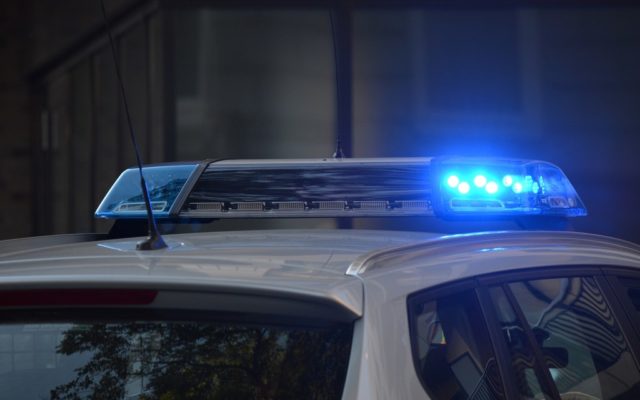
Increase in misdialed 9-1-1 calls may be caused by smartphones and smartwatches
An estimated 240 million emergency 9-1-1 calls are made from phones in the United States each year, with least 80 percent originating from wireless devices, according to the National Emergency Number Association.
Among those calls are an increasingly unhealthy number of 9-1-1 misdials, many coming from newer models of some cell phones and smart watches with a feature that activates an automated emergency call when side buttons are pressed multiple times — often accidentally.
Such calls present a time-consuming quandary for law enforcement.
“We really haven’t sat down and taken a survey of how these calls have come in,” Piscataquis County Sheriff’s Office Chief Deputy Todd Lyford said. “But we’ve recently noticed that the [smart phone] with its automatic 9-1-1 calling seems to be what’s really pushed the numbers up.”
During the last week alone, the Piscataquis County Sheriff’s Office received 14 9-1-1 misdials, a total that doesn’t count those that may have been assigned during that time to local police departments in Dover-Foxcroft, Milo and Greenville.
That same office received 467 misdialed 9-1-1 calls during the first half of the year, then 49 more between July 1 and 7. Six of the July 1-7 calls were misdialed between 6 a.m. and 11 a.m. on July 7 alone.
“It’s been a daily thing,” Lyford said. “There’s a myriad of reasons why people mistakenly call it and we’re just trying to do the best we can to get it to slow down so we’re not just running around chasing these ghost calls.”
Cellphone and smartwatch misdials can happen without the owner’s knowledge, such as when someone carrying a phone in his pocket while driving or riding in a vehicle is jostled in his seat.
“We’ve started getting a lot of calls from people on ATVs and in vehicles,” Aroostook County Sheriff’s Office Cmdr. Joey Seeley said.
“I guess if you bounce around a lot and hit one of the buttons three times there’s a feature that dials 9-1-1,” he said. “I haven’t kept up with the technology part of it, but for whatever reason when I was reading the complaints in June I said, ‘Holy, we’re getting a lot of 9-1-1 calls.’”
The Aroostook County Sheriff’s Office reported receiving 60 9-1-1 misdials during the first three weeks of June.
“That’s a lot for us,” Seeley said. “It consumes a lot of our time to determine if they’re legitimate or not.”
Officials in Cumberland County estimated earlier this year that 30 to 40 percent of their 9-1-1 calls were misdials, while the Kennebec County Sheriff’s Office responded to 160 9-1-1 misdials in less than two months earlier this year.
Other examples include Grand Traverse County, an area of 90,000 residents in north-central Michigan, where of the 120 9-1-1 calls received in a given day, 30 are misdials or hang-ups — meaning an average of 900 misdials per month and more than 10,000 a year.
Law enforcement officials in metropolitan Calgary, Alberta, say they receive 300 accidental 9-1-1 calls per day.
The quickest solution for a misdialed 9-1-1 call is for the caller to remain on the line to confirm for the responding dispatcher that there is no emergency.
But many people whose cellphone or smartwatch misdialed 9-1-1 aren’t aware their phones have dialed the number so they may not answer, or after realizing the phone has been misdialed accidentally, they merely hang up.
In those cases it is left to law enforcement to try to track down the caller to confirm there is no emergency.
“We try to make sure we check on every call because there are those times when someone is trying to make an emergency call and can’t for some reason because things are going on and there is an emergency,” Lyford said. “We don’t want to miss a real emergency so we try to verify all these calls.
“If we can’t reach them or don’t get responses then we’ll send someone out to check and make sure they’re fine if we can locate them.”
What sometimes exacerbates that scenario for law enforcement officials in rural Maine is the large tracts of land they are tasked to cover.
“What happens is say we get a call from the Allagash but you stay on the line and tell us you were setting up your phone or it just misdialed, then there’s no emergency,” Seeley said. “But we may have to get up there fairly quickly if there’s a hang-up. We’d rather you just tell us up front that it was an accident.”
Both Seeley and Lyford said there is no simple solution to the 9-1-1 misdial dilemma.
“I don’t want to say people should shut [the emergency call feature] off, but if they’re going to be active and have their phone with them and it has that feature, that they need to consider it so it won’t call 9-1-1 accidentally,” Lyford said. “If they feel they need that security we don’t want to discourage it, but if they know they’re going to be out there and feel comfortable not having it on, we would encourage that.”